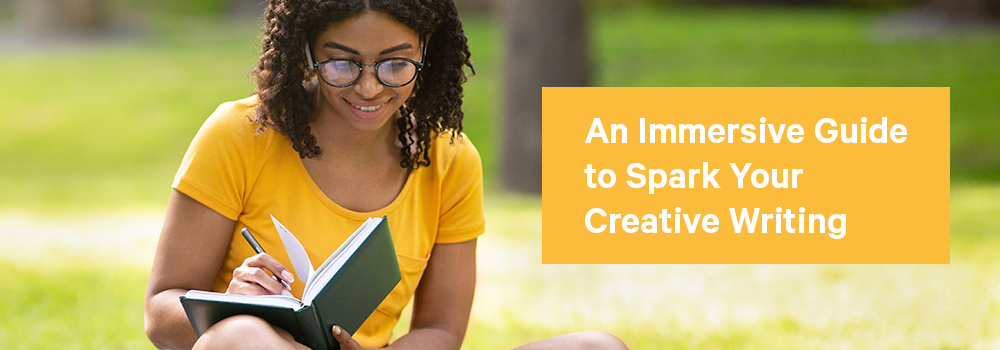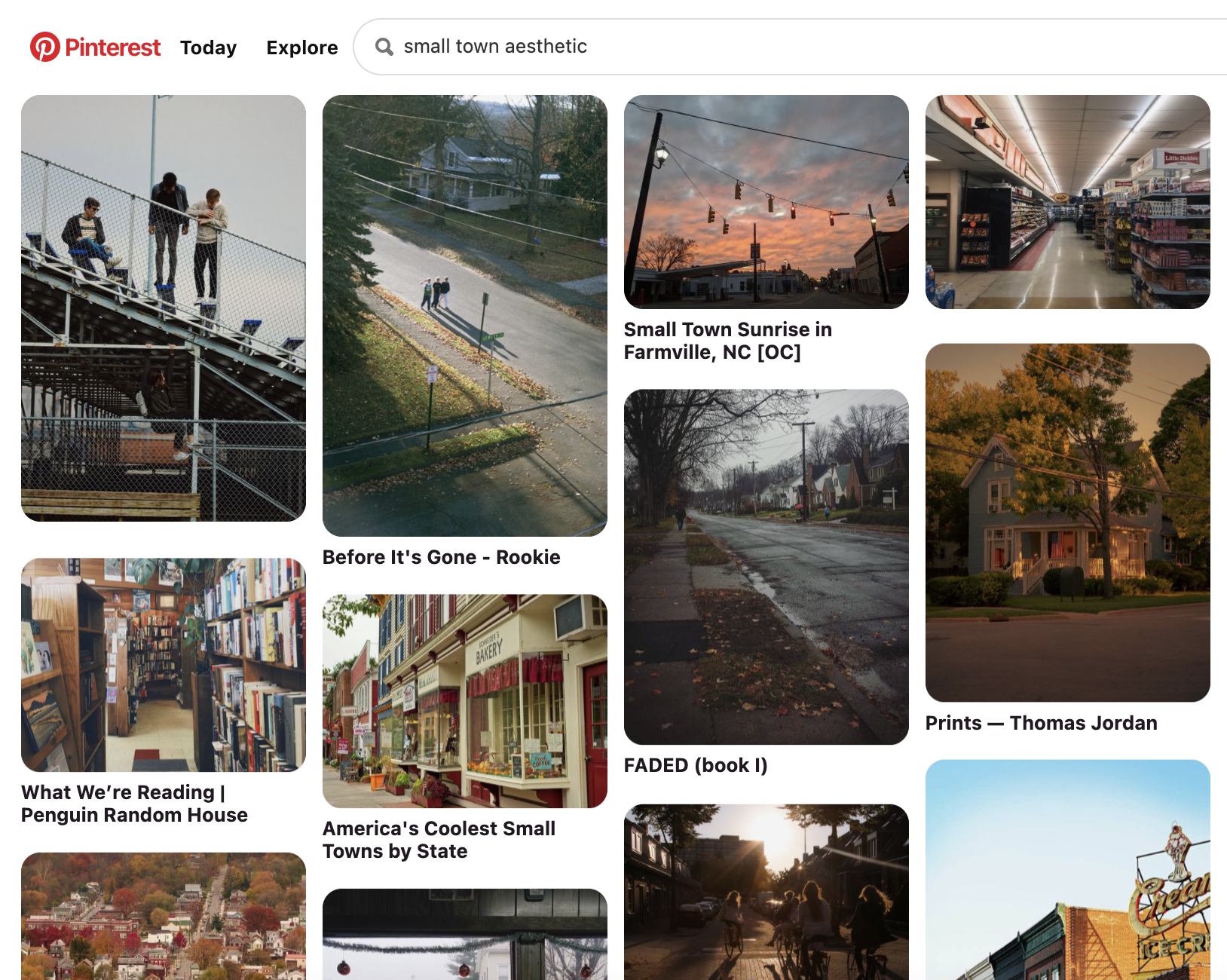 Written by Kashmala, co-op student with Halifax Public Libraries
Written by Kashmala, co-op student with Halifax Public Libraries
Creative writing is a favourite pastime or profession for many. It is a wonderful feat to imagine your own story and build a fictional world using only words. If you love creative writing and are looking for some new ways to get into the writing zone, or if you need new inspiration to get past a block, try out these steps.
Atmosphere
Engaging your senses by creating the right atmosphere before you write can encourage your creative output. Prepare a cup of your favourite tea or coffee, light a scented candle, and read on.
Physical environment
Surround yourself with the type of atmosphere that encourages your creativity. Are you a coffee shop frequenter? Do you have a favourite spot at the Library? Do you take trips to the local park with a picnic blanket and a notebook? Think about where you work and what you like about that physical environment.
Even just staying at home in your pajamas can be your writing zone. Embrace it! Settle in with your favourite writing instrument and make that space as comfortable as you can.
Visual inspiration
If you’re trying and struggling to visualize what you’re describing with words, it’s time to sign up for a Pinterest, opens a new window account. Imagine if you had a tack board in front of you where you pinned pictures for inspiration or tidbits of information for reference. If your writing zone is at home, you can absolutely choose to create a physical board. But if you’re on the move, or you just have too many ideas, Pinterest is the free and virtual version of a mood board with countless images and ideas to offer.
Using the Pinterest app or website, search up character designs, setting inspirations, writing prompts, and anything else you need inspiration or a visual reference for. You can create multiple boards on Pinterest, allowing you to curate your content in specific groups for easy finding. Even just creating an aesthetic mood board featuring some images relevant to your story will be motivating to look at.
Tip: Adding the word "aesthetic" after the theme you want to search will guarantee great results for inspiration.
For example, here are some results for searching "historical aesthetic":

Results for searching "small town aesthetic":

Also try searching Pinterest for writing help. Here are a few ideas that pop up when you search "character descriptions":

Auditory environment
Your ears are engaged while you write. Whether you work in coffee shops for the background noise, or sit outside for the sounds of nature, or just listen to your favourite songs on repeat, you are engaging your ears as part of your creative writing process.
If you are a music-lover, a great way to set the ambiance is searching for themed playlists on YouTube, opens a new window and Spotify, opens a new window. On YouTube, you can find user-created playlists by searching a theme or genre you’re interested in (i.e. "star-crossed lovers playlist"), or make your own playlist with a free YouTube account.
You can do the same thing on Spotify, though you may wish to purchase a subscription for easier use of the platform. Just search the theme you like (i.e. "star-crossed lovers") and explore the playlist section of your results. If there is a specific song you love, click the three dots next to the song and then click "Go to radio." This will show you suggestions of similar songs. Feel free to make your own themed playlists for each project, character, or mood, like with the Pinterest boards.
Strategy
Plan your day
We’ve all got things to do during the day. If you can, pencil in a scheduled time to write. Think about when you feel the most productive. Some people are early birds, some are night owls, and some are in between. If you work best when no one disturbs you, put your phone on silent and let others know this is your "me" time. Creative writing is self-care, too!
Setting goals is another important step in the planning process. If you find yourself often distracted or writing too little, try setting an attainable goal for a daily word count. Once you’re comfortably hitting your goal, increase it little by little and eventually you will have trained yourself to write more.
Writing prompts are a great way to do these daily exercises if you don’t already have a project to work on. Prompts set up a scene to give you an idea on what to write about and the rest is up to you! Check out this list of over 100 prompts, opens a new window and see if you can challenge yourself to completing them all, whether it is one a day, or three a week—find the schedule that works for you.
You can also check out a previous Library blog post by staff member, Vicky, featuring some great writing prompts here, opens a new window.
Plan your story
Though the term "creative writing" suggests you can create as you please, sometimes you hit a block and need a little help.
If you have an idea you love but don’t know where to take it next, this blog via reedsy.com, opens a new window has some great tips on the various ways you can plan your story. Try out their suggestions and remember, nothing is set in stone. You can always go back and change things as you build your story.
Tip: Write out your plot on pieces of paper or sticky notes and arrange them on a surface. With this method, you can move events around easily and visualize the outline of your story. If you have multiple perspectives, you can even colour-code for each character.

Research and inspiration
Detail is important to flesh out your writing, such as historical facts, character development, worldbuilding, and much more. Whether you’re looking for new inspirations, or supporting information on an idea you already have, you can research in various ways.
Search online and in books
Surfing the web is the easiest and fastest form of research, but be wary of incorrect information. Make sure to pull from credible sources when writing about important topics, especially if you are sharing your work publicly. If you like visiting your local Library branch, you can take the traditional route and check out some physical books. Any book with an index is your friend!
Podcasts and audiobooks
If reading pages of information is just not your thing, plug in your headphones and try out a podcast or audiobook on the topic you are interested in. You can multitask while doing this by taking a walk or catching up on chores. With your visual senses engaged as well, this can sometimes create a spark of inspiration.
If you're new to podcasts, learn more about where and how to listen in this article, opens a new window. Audiobooks are available from the Library catalogue, opens a new window–there are thousands to browse and borrow!
Read more fiction
If you’re a creative writer, you are likely a fond reader too. Reading fiction is a great source of research and inspiration. Try reading books in the genre you are interested in and see which elements you like about the stories and which elements you wish were more included. This might help you narrow down what type of story you want to write.
Community support
If you don't have an in-person group of writer friends, have no fear–the internet is here! Try joining a Facebook writers’ group to get support from a community of likeminded individuals. You can give and receive feedback on ideas, drafts, writing strategies, and anything else that will help keep you motivated and on track.
Write anything!
It’s okay if you don’t have all of the pieces planned out before you start writing. This is a creative process and any technique that works for you is part of the process. If you’re ready to start writing with or without these steps, don’t let anything stop you.
Got a sudden idea for a poem? Jot it down when inspiration strikes. Have a sense of a novel but don’t have a plot? Write scenes of your characters and setting and build your ideas as you explore your story. Write as much as you like and go back for edits later. If you find yourself hitting a block, come back and review the planning and researching steps to get back on track.
Remember, the most important step in creative writing is to have fun!



Add a comment to: An Immersive Guide to Spark Your Creative Writing